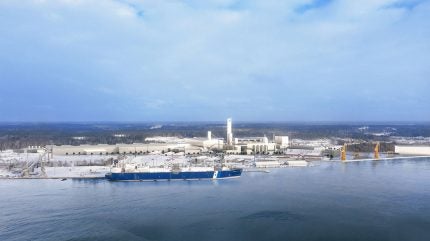Pilbara Ports has released its first Climate Action Plan, outlining a pathway towards a sustainable future for its port operations and the wider Pilbara region.
The five-year plan (2025–2030) sets out practical steps to guide Pilbara Ports operations and support its customers’ decarbonisation efforts.
Pilbara Ports said the plan builds upon its decarbonisation initiatives, including the development of a Pilbara Clean Fuel Bunkering Hub, acting on its Scope 1, 2 and 3 carbon emissions and exploring renewable energy solutions at its ports.
The plan targets three key pillars for action: climate change opportunity, climate change resilience, and emissions reduction. Each pillar has targeted initiatives to address climate risk.
Under climate change opportunity, the plan identifies the development of the Pilbara Clean Fuel Bunkering Hub, conducting ammonia bunkering trials, developing green corridors between international ports, and signing memorandums of understanding with international ports.
For resilience, it identifies climate risk scenario analysis, coastal hazard risk management adaptation plans for Port Hedland and Dampier, integration of climate risk into the port internal risk framework, and climate risk reporting to Department of Treasury.
Under emissions reduction, the initiatives include developing a net-zero transition plan, Scope 3 emissions analysis, forecasting and collaboration, and a Port Hedland renewables feasibility study.
Pilbara Ports chief executive officer Samuel McSkimming said the plan reinforced the organisation’s commitment to sustainability and role in shaping a low-carbon future.
“As one of Australia’s leading facilitators of iron ore trade, we play a vital role in driving the global transition to net zero by 2050,” McSkimming said.
He said the plan laid out tangible steps to future-proof port operations by supporting decarbonisation initiatives through the ports.
“Our ports are critical to global trade, and this Climate Action Plan ensures we remain a strong, resilient gateway for exports while ensuring we meet our climate action goals.”
Pilbara Ports recently achieved its sixth consecutive year of record-breaking throughput, cementing its status as the world’s largest bulk export port authority.
It handles approximately 81 per cent of Australia’s national iron ore trade and 43 per cent of global iron ore trade.
The authority shipped 730.8 million tonnes (Mt) of iron ore exports during FY25, a three per cent jump from FY24.
A record 775.7Mt of exports and imports passed through the ports of Ashburton, Dampier, Port Hedland, and Varanus Island during the 2024–25 financial year (FY25), valued at approximately $153 billion.
The Port of Port Hedland led the way with a throughput of 577.7Mt, a one per cent increase from the previous financial year.
Want to connect with the mining industry? Register to attend AIMEX and WA Mining Conference.




